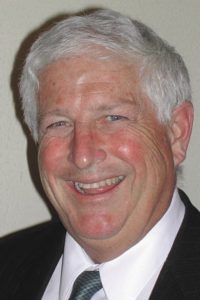Will the new county board majority take charge?
January 5, 2017
OPINION by MICHAEL F. BROWN
Editor’s note: A column by Republican Mike Brown will run in CalCoastNews every other Thursday, rotating with a column by Democrat Stew Jenkins.
One of the institutional weaknesses of California’s Board of Supervisor form of county government, generically, is that no one is actually in charge from a policy leadership standpoint. There is no mayor, president, prime minister, or chairman elected at large to propose and rally an overall direction for the ensuing two or four years after a new majority is elected.
Most county boards follow a tradition of rotating the board chairmanship among themselves every January, rendering the position relatively weak. Five equal dukes and duchesses, each elected from a separate geographic district, grope for direction and at least three votes to entreat a protected, permanent, and sometimes haughty careerist staff to formulate policy items for potential action. Since each county supervisor is dependent on the voters in their respective districts for support and reelection, there is rarely a voice that can independently propose and lead countywide strategic policy.
Further adding to the centrifugal forces at play, four to seven of the department heads (depending on the practices in a particular county) are directly elected by the voters. These include the district attorney, sheriff, auditor controller (who contradictorily is both chief financial officer and internal auditor), assessor, county clerk-recorder, registrar of voters, and treasurer. Each of these officials is a politician in his or her own right and must stand for election every four years. Often candidates for and members of boards of supervisors must curry favor with some of these political players in the form of endorsements, appearance at rallies, and fundraising in order to be elected.
Further muddying the waters, a number of the appointed department head positions are subject to state legislatively imposed job qualifications and special protections that have rendered them somewhat independent and reminiscent of members of the medieval guild system.
Social services directors, county counsels, agricultural commissioners, behavioral health directors, and probation chiefs all come with California-specific educational and time-in-service requirements, which restrict the number of potential candidates statewide and constrain the ability of boards to enforce policy. In fact, the requirements for agricultural commissioner are so convoluted that it is almost impossible for counties to replace those who retire.
County counsels are provided with a four-year term and can only be removed for bad behavior or neglect of duties.
Unlike governors, presidents, mayors, and city councils (and sometimes city managers in advanced cities), most boards of supervisors have no access to an independent expert policy study and formulation staff.
The relatively structurally weak county administrative officers are primarily focused on the budget and must seek both board approval and staff consensus to even study, let alone propose, a major policy initiative. Moreover they can be fired with three votes on any given Tuesday and must be wary of offending the independently elected department heads or employee labor unions that are supporting particular supervisors with large campaign contributions, not to mention the supervisors themselves.
Given these realities, what can the new incoming San Luis Obispo County Board of Supervisors majority do to reform the existing county policy that is explicitly hard wired with the overarching “smart growth” prime directive (which is really no growth)?
If Supervisors Debbie Arnold, Lynn Compton, and John Peschong theoretically want to make it easier to zone in and build garden apartments, how should they go about displacing the current set of laws and regulations which make their development almost impossible? Or how could they make it easier to develop housing for the homeless, including homeless RV parks, small apartments, and group homes?
Similarly how could the new board majority move beyond the county’s current nihilist water policy of attrition by conservation and look strategically at big picture solutions with other jurisdictions?
How can the board redirect staff (especially planning, public works, the CAO, public health, community development, and economic vitality corporation) away from adding more and more plans, fish studies, fees, and regulations, and instead to come up with strategic proposals for generating household supporting jobs and the complementary housing?
How about an assignment that says: We want our children and grandchildren to be able to live and work in SLO County inter-generationally. This is more important than all the trivia. Go study this for a month, get the numbers, and give us some alternative policy scenarios. Don’t just list the barriers, but propose some realistic yet innovative solutions. Stop fiddling with vacation rentals, winery ordinances, habitat conservation plans, fee studies, and the stupidly convoluted and constipated Resource Management System for a few weeks and do something real.
Aside from generating genuine strategic policy alternatives for public consideration, the results of the assignment would be a good performance test of imaginativeness and supposed expertise of the department heads involved. These professionals are making over $200,000 in salary and valuable “fringe” benefits. Anyone can figure out how to ban vacation rentals or make adding a bedroom cost $10,000 in “minor use” permit fees, but how are we going to keep our families here (particularly in the teeth of the impending Diablo Canyon shutdown)?
Especially germane to substantive policy leadership and during the Jan. 10, SLO County Supervisor Board meeting, the issue of electing a board chair and vice-chair will be on the agenda.
It is supposedly Supervisor Adam Hill’s turn. Even though he is not part of the board majority, would he be willing to lead a new approach in recognition that there is a new majority?
After the election, the Santa Maria Times reported Hill as stating: “You know, it’s always hard to predict,” Hill said when asked if thinks Peschong’s addition to the board will change its balance. “It would be great to focus on governing, and I feel confident we can do that. I look for (John Peschong) to be a practical, helpful voice more than anything.” Santa Maria Times Nov. 9, 2016.
But will Hill be practical, truthful, and willing to govern in a different direction, or does he see Peschong as useful only if he is a handmaiden to himself (Hill) and Gibson and their established polices?
Ask him. If not, as they say in Jersey, “cut the crap,” elect Peschong (who has large scale organizational experience) board chairman for three years, and start telling staff what policy is.
Hill should understand. After all, and from time to time, he waxes nostalgic about the hard ball New Jersey politics of his youth.
Mike Brown is the Government Affairs Director of the Coalition of Labor Agriculture and Business (COLAB) of San Luis Obispo County. He had a 42-year career as a city manager and county executive officer in 4 states including California. He can be reached at mike@colabslo.org









The comments below represent the opinion of the writer and do not represent the views or policies of CalCoastNews.com. Please address the Policies, events and arguments, not the person. Constructive debate is good; mockery, taunting, and name calling is not. Comment Guidelines